In 2024, the Olana State Historic Site will open the Frederic Church Center, a 4,500-square-foot orientation center with ticketing, restrooms, a café, and exhibition space. It will be the first new building at Olana since American painter Frederic Church’s death in 1900. It will also be the first publicly accessible carbon-neutral building in New York State. The $11 million project was generated from a 2015 strategic landscape design that encompasses the land and buildings that could be recovered, restored, rehabilitated, and brought into the full public experience.
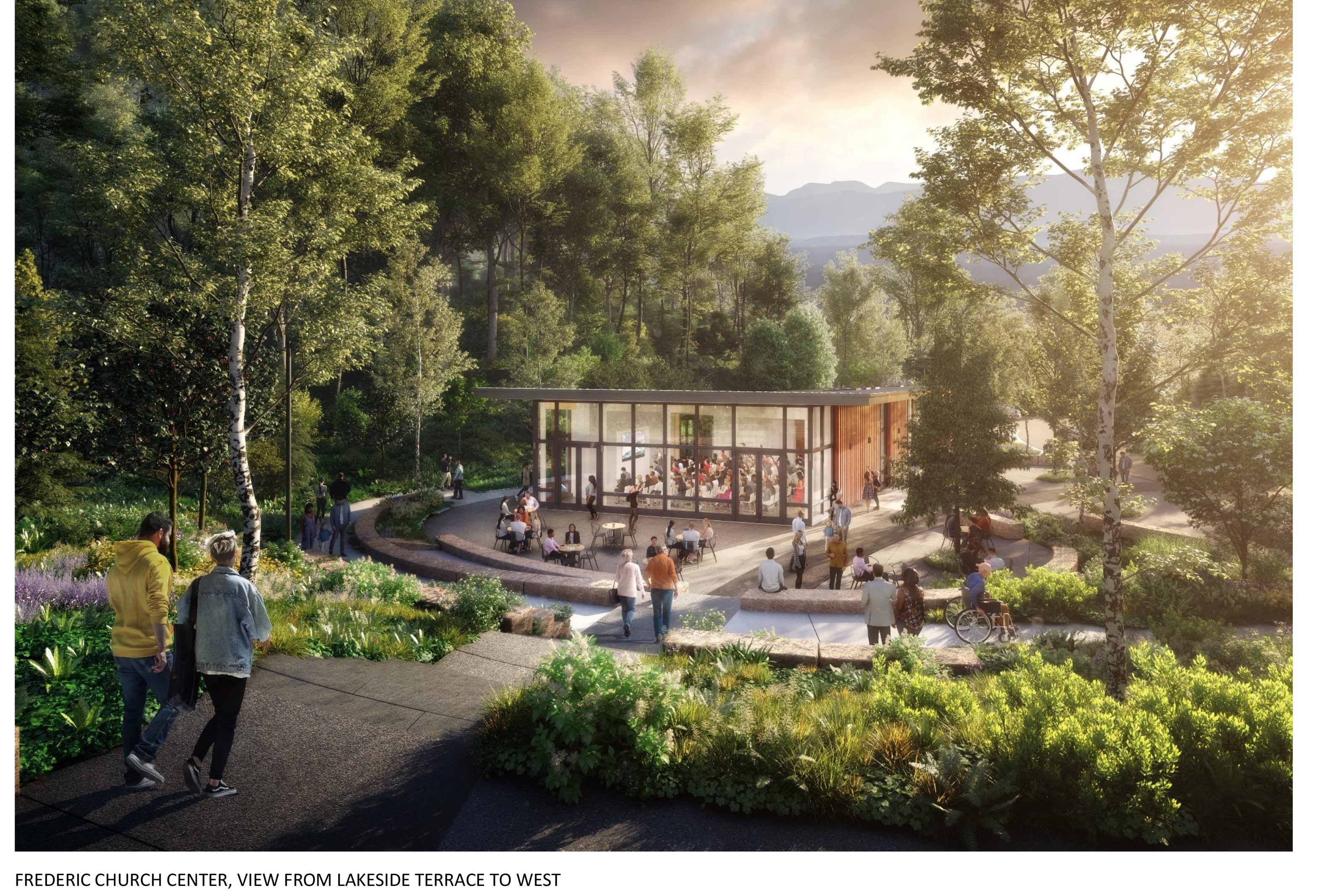
Expanding and Improving the Visitor Experience
“In 2021, Olana had over 200,000 visitors, but only 16% took a public tour,” said Sean Sawyer, the Washburn & Susan Oberwager President at The Olana Partnership. To help accommodate the current visitorship, the FCC will include 45 parking spaces, an entry lobby for ticketing and orientation, restrooms that will be accessible after ticketing hours, a café (the first time that Olana will offer food and beverages on site), and a multipurpose room.
“In the busiest times there are a limited number of tickets so there are a lot of sold-out tours, or visitors have to wait for the next tour and 90% of the total visitors only experience 1% of the landscape.” Olana already offers a number of public programs focused on connecting visitors to the landscape including the program series, Environmentalists on Olana consisting of walks led by regional environmentalists, agriculturalists, activists, and ecological stewards. The series is designed to give visitors an opportunity to explore Olana’s history and current legacy through the intersections of art and environmentalism. One goal for the FCC is to increase awareness of these guided tours and the building will have adjoining outdoor terraces and paths that connect to Olana’s historic carriage road network, making all 250 acres of the historic landscape an integral part of public interpretation.
“It’s not a lot of space, but it includes an equal amount of outdoor space with places to sit and wait before you move through the landscape,” said Sawyer. “It’s really the next necessary step should there be more at Olana in the future, but this is the way we get to restore our collection which includes the farm, the barn, and all of the landscape, and have a sustainable maintenance plan for it.”
“We’re imaging a space that in the regular ticketing hours is providing information about the tours, is giving you an overview of Church and where American art and environmental consciousness intersect but then come 6 pm and there’s a special program about someone with a book on the Catskills that changes over and they’re able to show their PowerPoint or video or do that and then on Sunday evening there's a wedding reception.”
Finding Space in a Historic Landscape
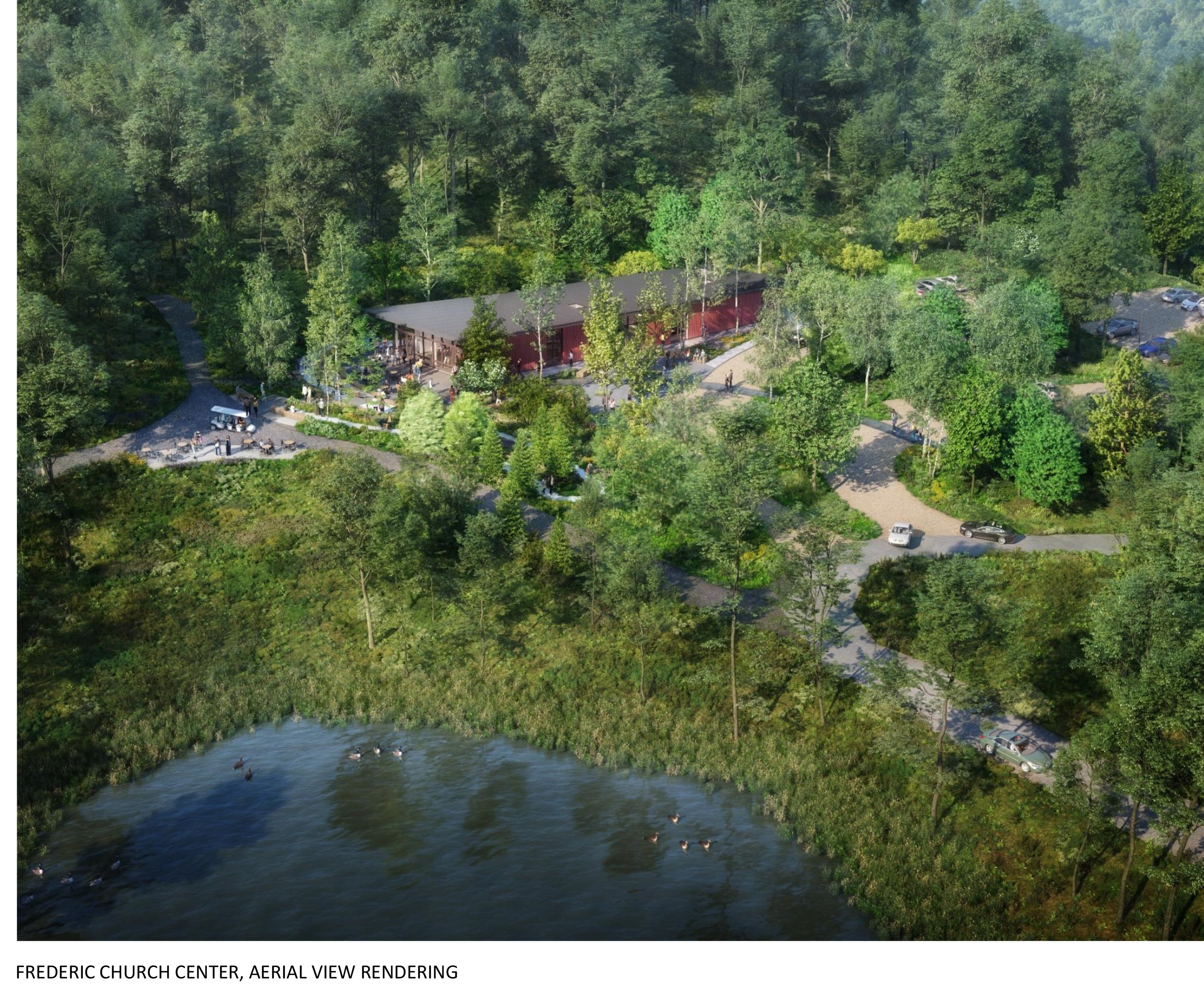
Landscape architectural firm Nelson Byrd Woltz utilized data maps, including a heat map that visualized current and potential human activity across the site to determine where the FCC would be located within Olana State Historic Site. They included the historic farm, Crown Hill, Ridge road, and the lake in their mapping activities. They also referred to an 1886 plan by Church to help better understand the 19th-century vision for Olana and how the 250-acre naturalistic landscape was to be connected by carriage roads and walking trails.
The Olana Partnership also identified a three-point historic corridor between the main house, the farm complex, and the lake and wanted to keep any new development outside this “historic core” to preserve Olana’s historic integrity.
The selected site is adjacent to the existing entry from NY-9G by the lake, looking up towards the house. This location positions the FCC to serve as the principal entry point for Olana. “Some people have described it as like a base camp for Olana, which I like because it’s located immediately adjacent to one of Church’s historic planned views from the lake up to the house. It will provide a transitional space for visitors before diving into the world of Frederic Church.” said Sawyer.
The location will also make it a highly visible, publicly accessible demonstration of sustainable design and carbon-neutral construction.
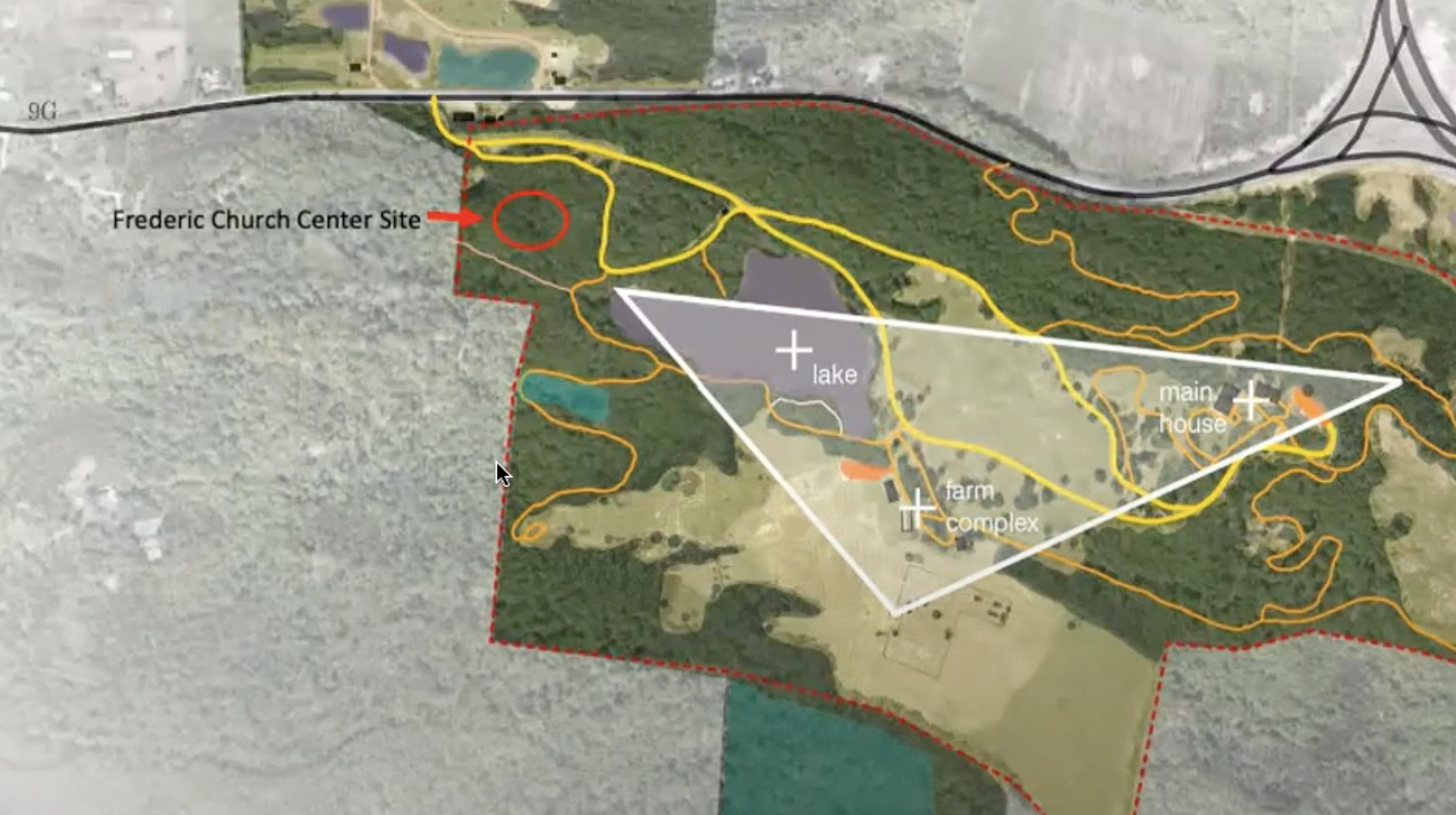
Sustainable Design
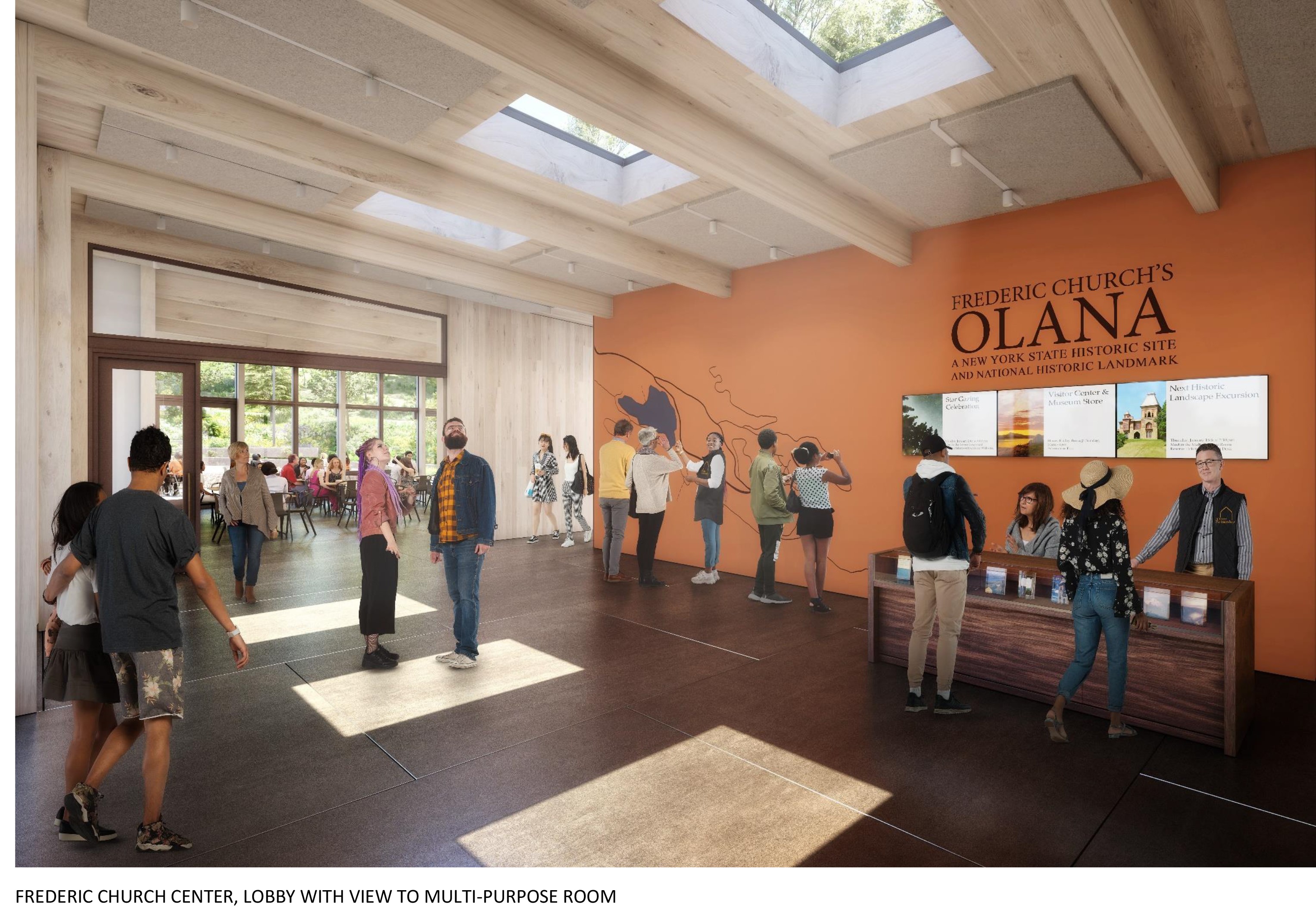
In building Olana, Church focused on creating his own version of an American Eden by planting trees and embracing a naturalistic landscape to create his own wilderness. There was also the opportunity to use sustainable materials and to make the FCC a green building.
“Assemblymember Didi Barret (D-106 Dutchess/Columbia) pushed us to make this project a better project, especially around its environmental stewardship,” said Sawyer. “She has wanted this to be the greenest building, sustainably designed, and she understands that this requires adequate funding to purchase long-lasting materials. She understands her influence and she is committed to environmental solutions,” said Sawyer.
Assemblymember Barrett secured $1 million to support capital development plans for Olana, the largest single grant from the Assembly to a NYS Historic Site. Assemblymember Barrett also connected Olana with colleagues around the state, including faculty at The State University of New York College of Environmental Science and Forestry (SUNY ESF) in Syracuse; specifically with Professor Paul Crovella whose primary research focuses on sustainable construction.
Faculty from SUNY ESF sat in on multiple presentations, provided advice, and met with architects from Nelson Byrd Woltz Landscape Architects and project engineers. “[SUNY ESF] is actively trying to build the capacity of the wood products industry in the state and that includes introducing the manufacturer of cross-laminated timber,” said Sawyer. “Most importantly, they’ve helped us realize the expense and the challenge to raise the funds are worth it because what we’re building will be the first publicly accessible model of engineered wood, cross-laminated timber frame in the state.” SUNY ESF will also work with Olana on the interpretation of that design for the public to help visitors understand what they are seeing in the materials used.
Currently, the State Environmental Quality Review process is underway and the project was presented for public comment in late April and is anticipated to start construction in 2023.
Leveraging a Collaborative Partnership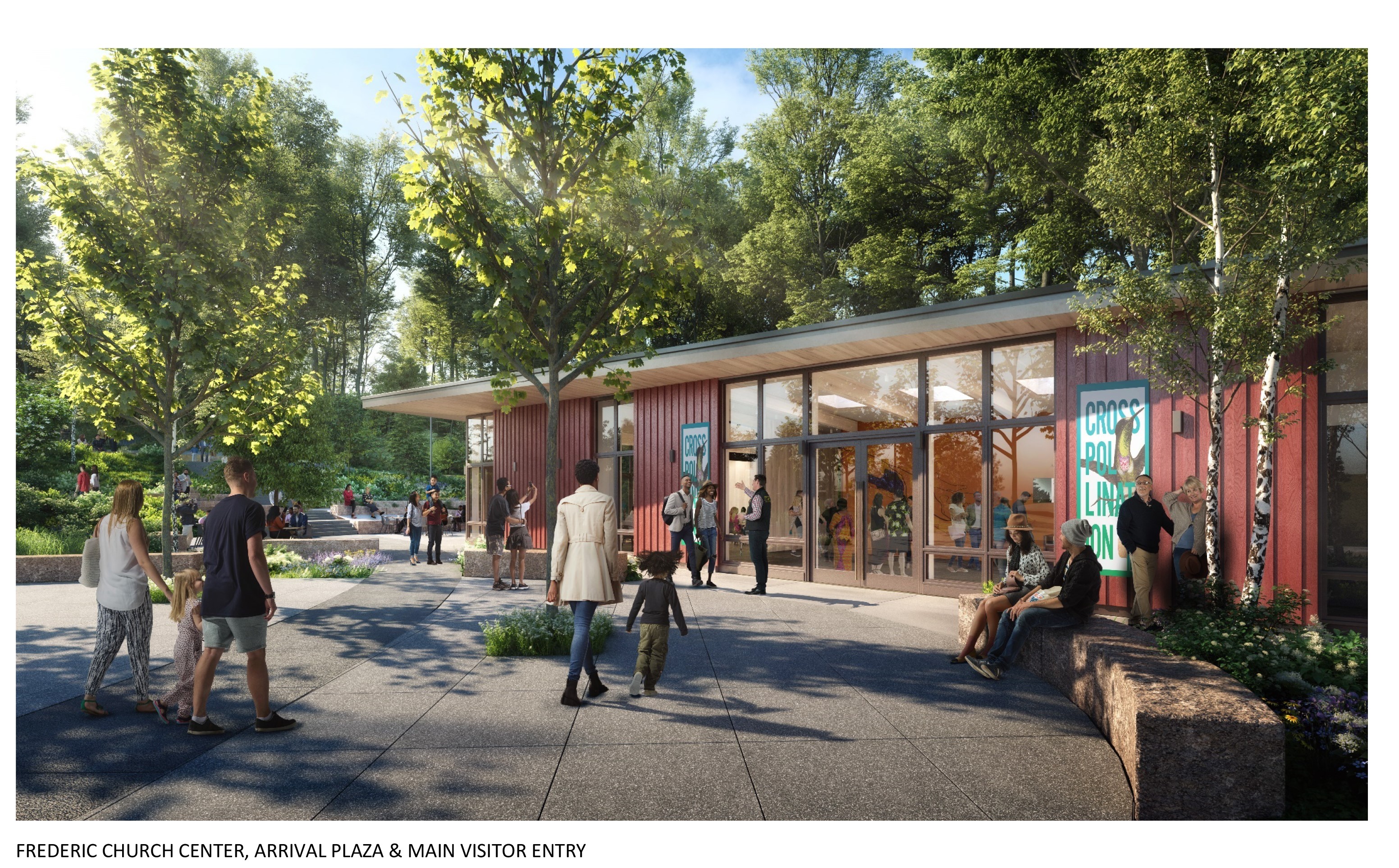
Olana has been a public/private partnership since the 1960s when the non-profit partnership then named “Olana Preservation” was incorporated and later transferred ownership to the New York State Historic Trust. Today the Olana Partnership operates all public programs and education programs as well as fundraising, marketing, and communications under a cooperative agreement with New York State Parks, Recreation, and Historic Preservation.
“This project, in particular, shows the strength of a public/private partnership to leverage both private dollars for public and public dollars for private,” said Sawyer. “From the very beginning of the planning process, it was The Olana Partnership board working closely with NYS Parks executives. Rose Harvey took a very direct role in the process. Olana was going to be a test case for capital funding to NYS Parks.” The former NYS Parks Commissioner Rose Harvey, who stepped down in 2018, helped to secure funding from then-Governor Andrew Cuomo’s office to Olana, the first time since 1974 that there was designated capital funding for NYS Park. The Frederic Church Center is a cornerstone of Olana’s larger capital development plan. “She was really focused on Olana I think in part because of the very viable strong pattern that is here,” said Sawyer. “For the Frederic Church Center, there was an agreement for it being such a visible and new construction building, that the private nonprofit, our organization, would be able to effectively fundraise. It’s a balance of the public and private funding with public funding supporting infrastructure and private funding going to more visible aspects of the project.”
Private and Public Funding Sources
The Olana Partnership has raised $7.5 million of the $11 million estimated cost for the Frederic Church Center with a goal of $10 million coming from private funding sources. In Round 11 of the Regional Economic Development Council (REDC), Olana was awarded a total of $3,268,776 –$1,868,776 from the New York State Energy and Development Authority (NYSERDA) that will support the development of a sustainably designed, carbon-neutral building with the goal to make the FCC a threshold to an immersive visitor experience of Olana as a unique, world-class carbon-neutral tourist destination at the intersection of American art and environmental consciousness. An award of $1,400,000 from Empire State Development will directly support building construction with the goal to increase Olana’s regional economic impact.
“This is not about in any way diminishing the role of the main house and its historic interiors and the decorative arts at Olana but rather about making the experience of them for people who visit more impactful,” said Sawyer. “It’s about having a real culmination of their visit by getting into the house and parallels in a way the historical experience of visiting Olana.”
Learn more about the Frederic Church Center here: https://www.olana.org/about/fccenter/
